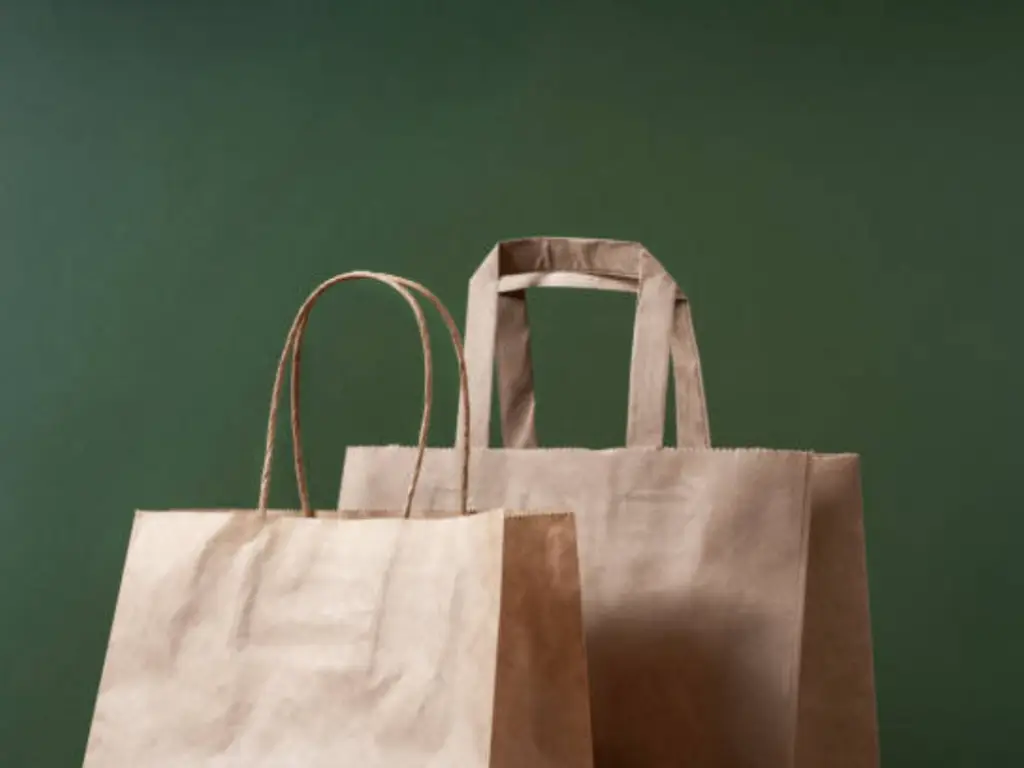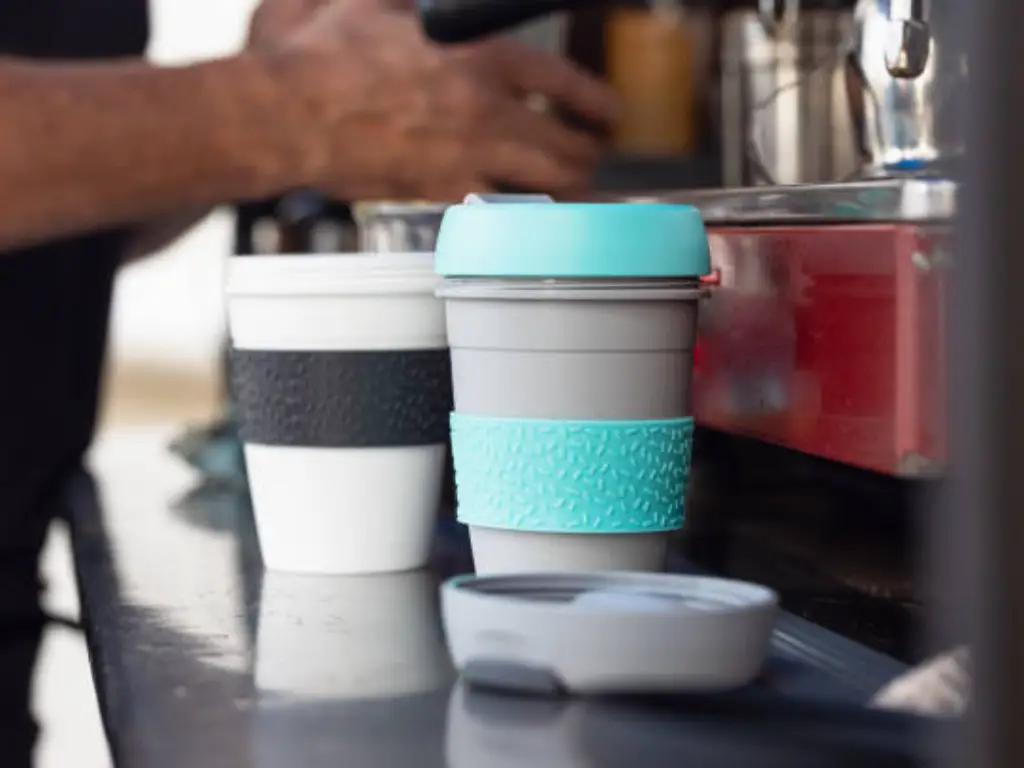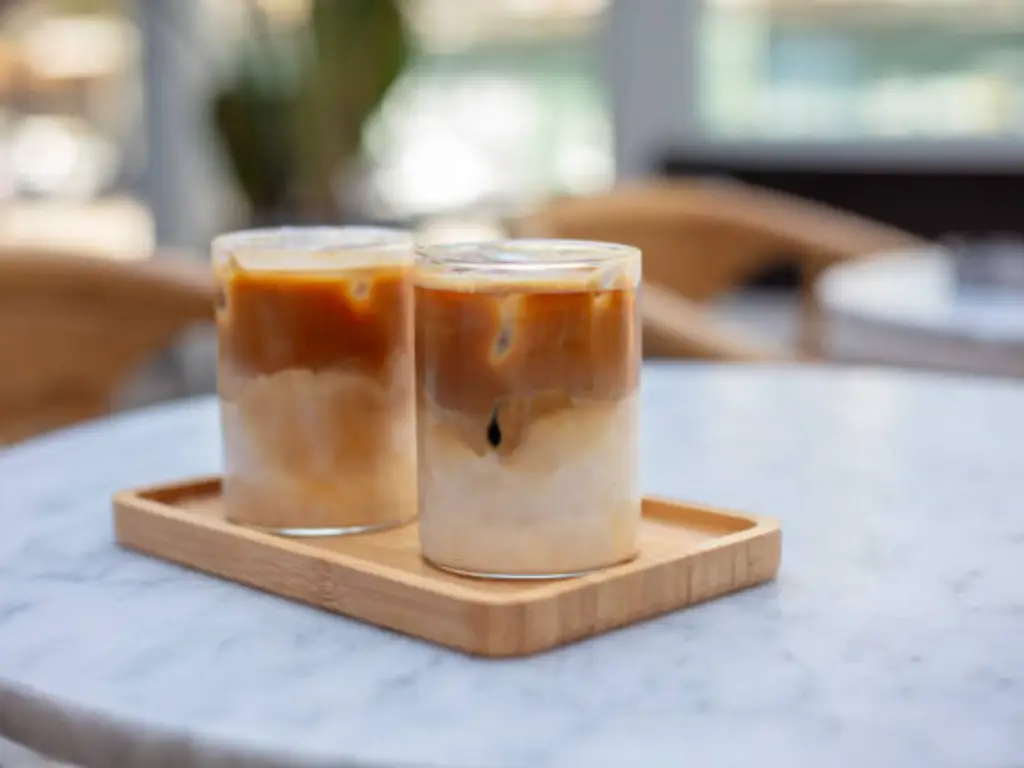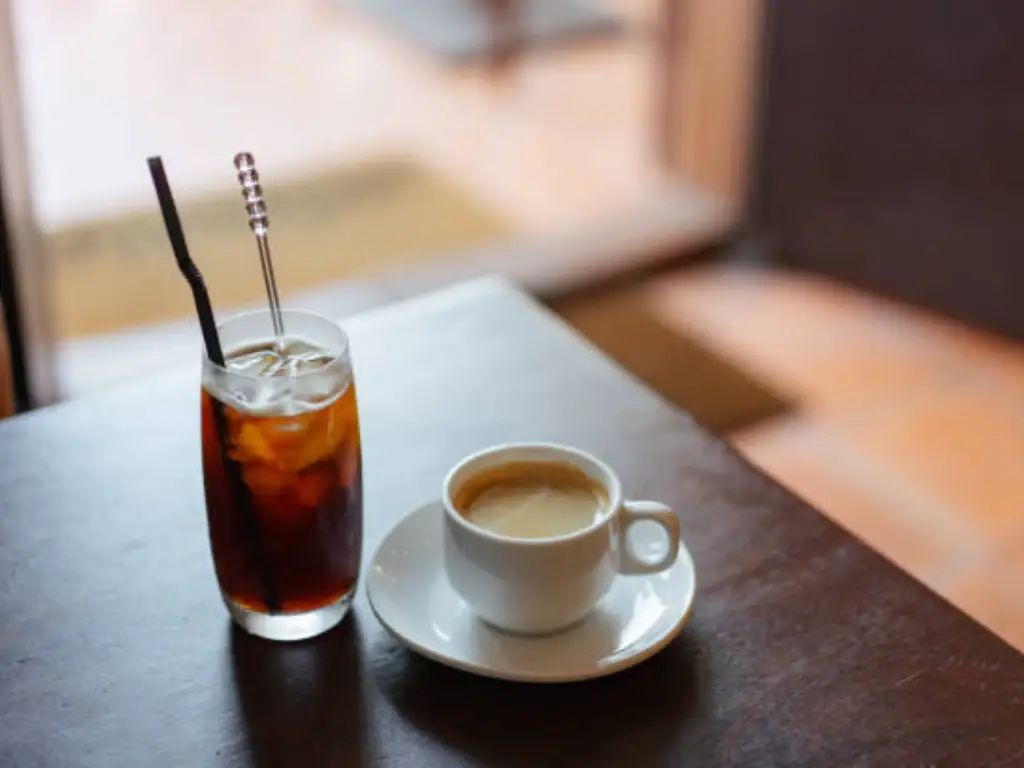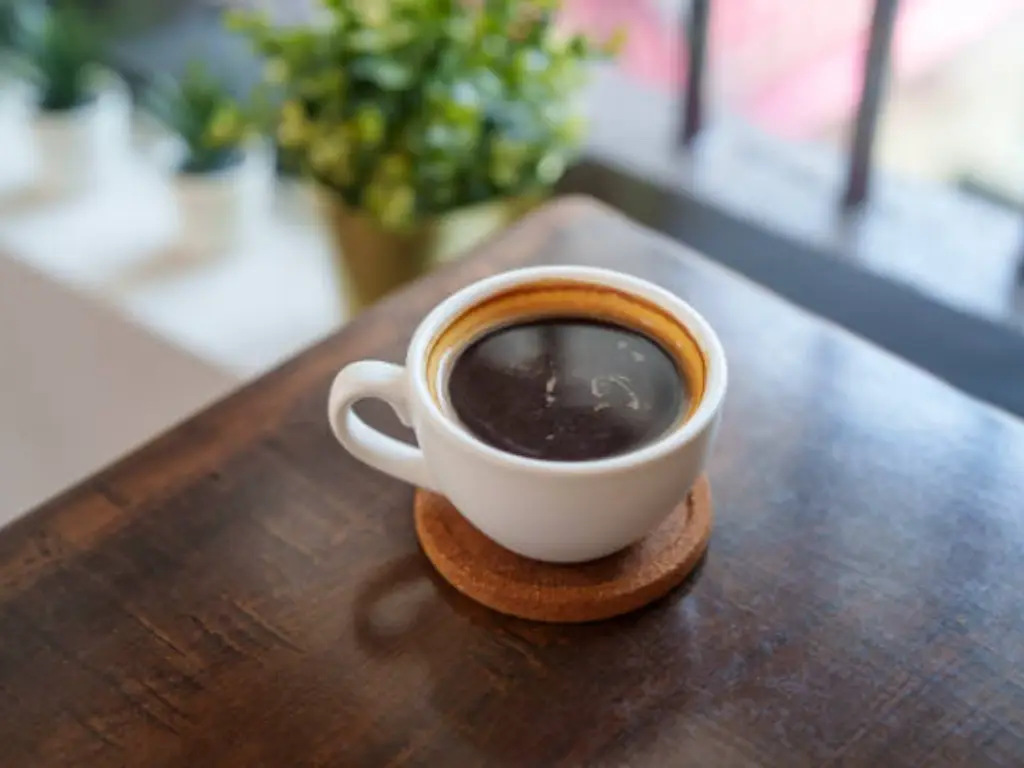Introduction
If you are a coffee shop owner or a barista, or even a coffee lover, you must know that making the perfect cup of coffee is much more than about the quality of the beans or the brewing method. The size precision of the cup is super important. It can affect the enjoyment of coffee flavour, the smell and even the look of your coffee. In this guide, we will be studying coffee cup sizes. We will discuss fundamental measurements and cultural differences.
Whether you are a long-time coffee lover or new to the business, it is necessary to know the nitty-gritty of coffee cup sizes. We will talk about the coffee sizes at the mainstream cafes. Also, we will cover the factors you should consider when you will be deciding on the size of your own shop. In addition to recommend you the top paper coffee cup supplier we will also assist you to make the right decision. Hence, let us begin this exploration of coffee cup size mysteries together.
The Standard Coffee Cup Size: How Many Ounces?
As the standard cup size is discussed, we should distinguish between paper coffee cups and mugs because they usually have different capacities and they are designed to meet different purposes.
Paper Coffee Cups:
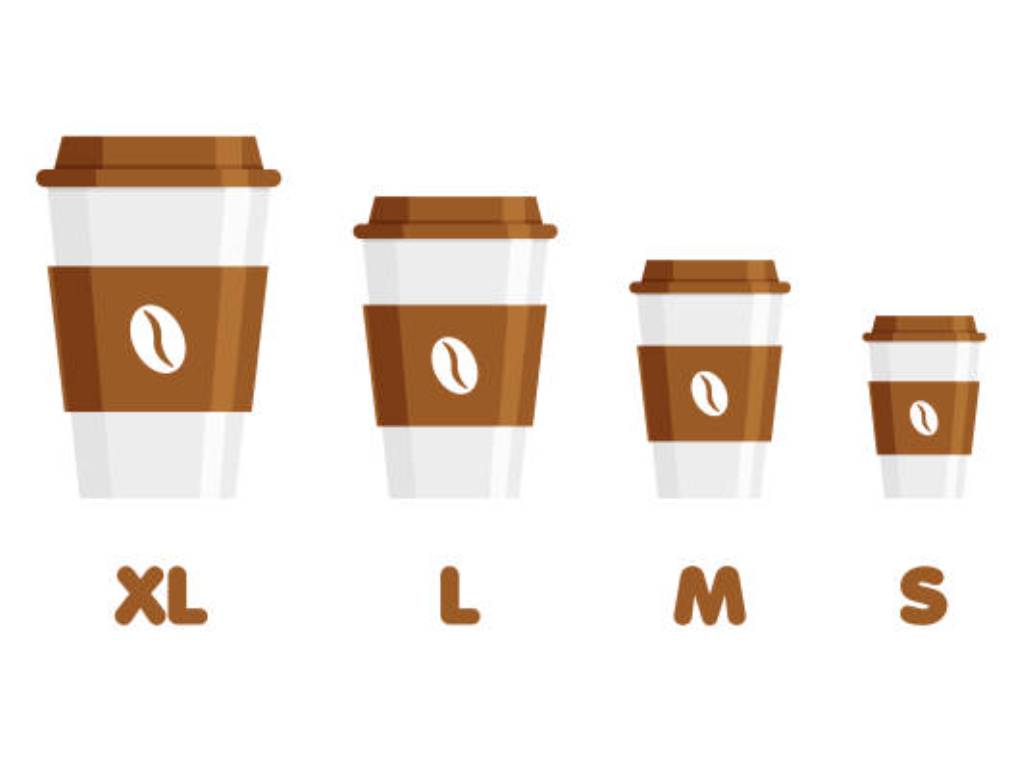
Disposable coffee cups are primarily made from paper or plastic. With growing environmental awareness, paper coffee cups have become increasingly prevalent, especially for hot beverages. Paper offers better insulation, often enhanced with double walls or sleeves, keeping coffee warm while protecting hands, making it the standard for convenient takeaway hot drinks.
A common question customers and new cafe owners ask is, How many ounces is a coffee cup for a standard serving? Generally, the industry standard for a ‘regular’ or ‘small’ takeaway coffee is 8 fl oz (236.6 milliliters). However, if you’re wondering how many oz is a coffee cup in a typical cafe today, you’ll find there is no single answer. To meet diverse consumer preferences and an expanding menu of drink choices, disposable coffee cups are available in a wide variety of sizes.
Common coffee cup sizes include:
| Size Name | Volume (oz / ml) | Typical Use | Coffee Types Suited | Common Settings |
|---|---|---|---|---|
| 4 oz | 4 oz / 118 ml | 4 oz cups are typically used for espresso shots or small tasting cups. Ideal for concentrated servings like espresso or coffee samples in cafes. Small size for strong, concentrated drinks. | Espresso, Ristretto, Macchiato | Cafes, Tasting events |
| 6 oz | 6 oz / 177 ml | 6 oz cups are used for smaller servings of coffee, such as a small black coffee or a cortado. This size is great for single espresso shots with a bit of milk, or other small specialty coffees. | Small black coffee, Cortado, Single espresso with a bit of milk | Cafes, Takeaway |
| 8 oz | 8 oz / 237 ml | 8 oz cups are ideal for regular coffee sizes like a small Americano or a flat white. Common for standard-sized single coffees with milk or cream, providing a balanced amount for a small drink. | Americano, Flat white, Single coffee with milk or cream | Cafes, Takeaway |
| 10 oz | 10 oz / 296 ml | 10 oz is a medium size commonly used for cappuccinos or medium-sized black coffee. It offers a good portion size for a more robust serving of coffee while still being manageable in terms of volume. | Cappuccino, Medium black coffee | Cafes, Takeaway, Offices |
| 12 oz | 12 oz / 355 ml | 12 oz is a very popular size for coffee shops, used for drinks like lattes, regular black coffee, or flavored coffees. Common for both takeaway and in-store consumption, it’s a versatile size for a variety of drinks. | Latte, Regular black coffee, Flavored coffees | Takeaway, In-store consumption |
| 16 oz | 16 oz / 473 ml | 16 oz cups are commonly used for larger drinks like iced coffee or large lattes. This size allows for more milk or ice, making it ideal for cold beverages and those preferring a larger portion of their coffee or specialty drinks. | Iced coffee, Large lattes, Cold beverages | Takeaway, In-store consumption |
| 20 oz | 20 oz / 591 ml | 20 oz cups are typically used for very large drinks like iced lattes, large iced coffees, or frappes. Ideal for customers who prefer more drink volume or those who enjoy a substantial coffee with milk and flavoring. | Iced lattes, Large iced coffee, Frappes | Takeaway, In-store consumption |
These good sizes are in demand in the United States and many other countries. Other coffee shops may even provide larger sizes, like 24 fl oz (709.8 ml) or 32 fl oz (946.4 ml), to match the needs of customers who love bigger servings or want to share their beverage.l), to match the needs of customers who love bigger servings or want to share their beverage.
To further complement our discussion on paper coffee cup sizes, this video provides expert café advice on selecting the right size for your needs.
Mugs:
Mugs are commonly used for both café and at-home coffee drinking, and they come in a wide variety of sizes and styles. The regular size for a coffee mug is typically around 8-10 fl oz (236.6-295.7 ml), which is similar to the regular paper coffee cup size. However, the size of a mug can vary depending on the type of coffee and intended use. Specialty mugs may have different dimensions based on style, such as for espresso or cappuccino. The mug size often influences how much coffee it holds and how comfortable it is for drinking. Understanding mug sizes is important when choosing the right one for a specific drink, whether it’s a small coffee small cup or a larger coffee mug size for more substantial servings.
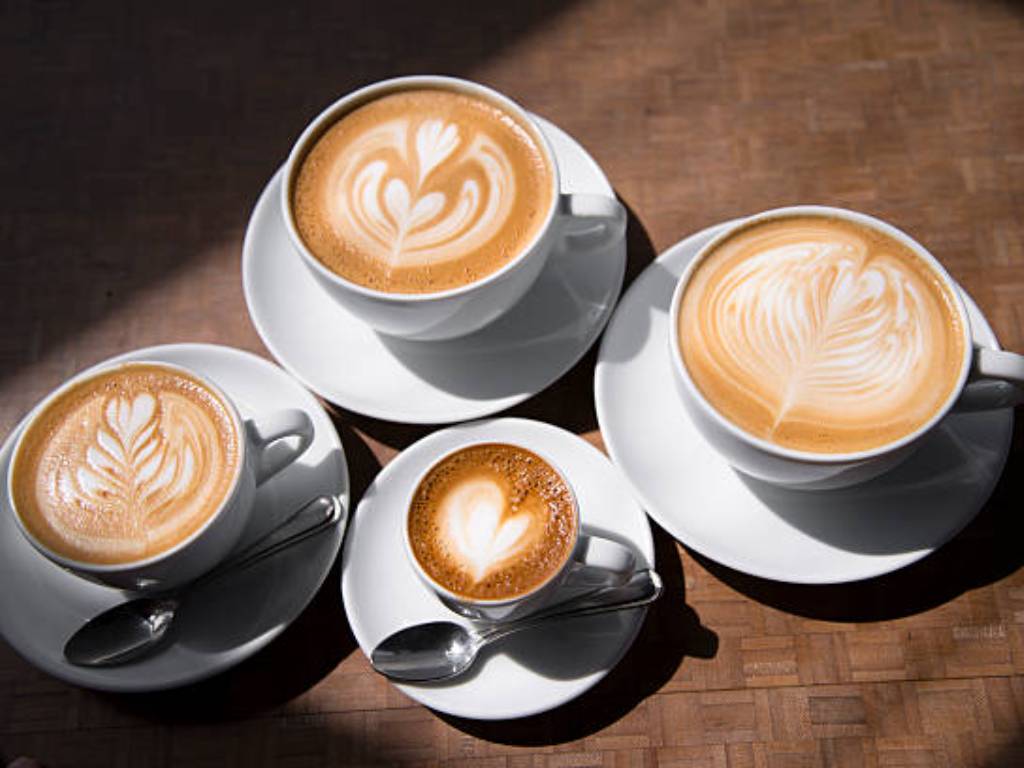
Here’s a detailed guide to some common coffee mug sizes:
| Size Name | Volume (oz / ml) | Typical Use | Coffee Types Suited | Common Settings |
| Demitasse (Espresso cup) | 2–3 oz / 60–90 ml | Designed for single or double espresso shots | Espresso, Ristretto, Macchiato | Cafes, Espresso bars, Home espresso setups |
| Small Mug | 6–8 oz / 180–240 ml | For modest coffee drinkers or light brews | Black coffee, Flat White, Cortado | Home, minimalist cafés, hotel rooms |
| Standard Mug | 10–12 oz / 300–355 ml | The most common mug size for regular coffee consumption | Drip Coffee, Americano, Latte, Cappuccino | Home kitchens, Offices, Coffee shops |
| Large Mug | 14–16 oz / 415–475 ml | For bigger servings; allows room for milk, foam, or flavor shots | Lattes, Large Cappuccinos, Chai Latte | Cafés, Workspaces, Coffee enthusiasts |
| Oversized Mug | 18–20 oz / 530–590 ml | For people who want to “nurse” a coffee for a long time or enjoy big iced drinks | Iced Coffee, Mocha, Tea Lattes, Hot Chocolate | Home (especially winter), Cozy cafes |
| Travel Mug | 16–20 oz / 475–590 ml | Designed for spill-proof portability and heat retention | Any type—usually brewed coffee, lattes, or tea | Commuters, Offices, Road trips |
| Jumbo / Soup Mug | 20–24 oz / 590–710 ml | Technically a mug, but often used for soup or massive hot beverages | Extra-large mochas, hot chocolate, soup | Home (cold weather), Relaxation settings |
Best mugs are not only of different sizes, but also of different shapes and materials, including porcelain, ceramic, glass and stainless steel. Each type has its own aesthetic and drinking characteristics. The size and style of mugs that you will be using in your coffee shop will mainly be dependent on the type of menu that you offer, on the preferences of your customers, and on the type of brand that you are.
To complement our discussion on the size of coffee mug, here is a video will guide you through how to choose the best coffee cups for your café, taking into account both size and functionality.
Glassware:
Glassware is another excellent choice for serving coffee, especially for specific drinks. It offers a clean, modern aesthetic and allows customers to appreciate the beautiful layered effect of their beverage. Furthermore, the non-porous nature of glass ensures it won’t retain flavors or odors from previous drinks.
Here is a detailed guide to common glassware used in cafes:
| Size Name | Volume (oz / ml) | Typical Use | Coffee Types Suited | Common Settings |
|---|---|---|---|---|
| Demitasse Glasses | 2–4 oz / 60–120 ml | Designed for single or double espresso shots | Espresso, Ristretto, Macchiato | Cafes, Espresso bars, Home espresso setups |
| Latte Glasses | 8–12 oz / 240–350 ml | Tall, straight-sided glasses for lattes and iced coffees | Latte, Iced Coffee, Cold Brew | Cafés, Modern restaurants |
| Cappuccino Glasses | 5–7 oz / 150–210 ml | Often tulip-shaped glasses to concentrate aroma | Cappuccino, Cortado, Macchiato | Cafés, Home coffee brewers |
| Irish Coffee Mugs | 6–8 oz / 180–240 ml | Specialty glasses with a handle for layered hot drinks | Irish Coffee, Spiced Tea, Hot Chocolate | Bars, Restaurants, Home (cold weather) |
Glassware can make your drinks stand out on social media and is a stylish choice for in-house dining. However, it’s important to choose thick, high-quality tempered glass to ensure its durability and heat retention.
Stainless Steel Cups:
Stainless steel cups and tumblers are highly valued for their durability, superior insulation, and portability. They are a go-to choice for reusable travel mugs, keeping hot drinks hot and cold drinks cold for extended periods. Their robust, non-breakable nature makes them ideal for on-the-go lifestyles, outdoor activities, and workspaces. High-quality stainless steel should not impart any metallic flavor to the coffee, ensuring a pure taste experience.
| Size Name | Volume (oz / ml) | Typical Use | Coffee Types Suited | Common Settings |
|---|---|---|---|---|
| Tumbler | 12–16 oz / 355–475 ml | Reusable, insulated cup for daily use. | Hot coffee, Iced coffee, Lattes, Cold brew | Offices, Commutes, Home, Outdoor use |
| Travel Mug | 16–20 oz / 475–590 ml | Designed with a lid and handle for easy, spill-proof transport. | Any coffee type, especially large lattes and iced drinks | Cars, Commutes, Travel |
| Large Tumbler | 24–32 oz / 710–946 ml | For those who want to “nurse” their coffee all day or for large cold drinks. | Large iced lattes, Frappes, Cold brew | Desk, Gym, Home |
Plastic Cups:
Plastic cups are a lightweight and versatile option, primarily used for cold beverages like iced coffee. They are valued for their durability and low cost, making them a popular choice for takeaway services where aesthetics and transparency are desired to showcase layered drinks. While some plastics (like PP) can handle hot drinks, most are better suited for cold beverages to avoid potential flavor transfer or warping.
| Size Name | Volume (oz / ml) | Typical Use | Coffee Types Suited | Common Settings |
|---|---|---|---|---|
| Small Plastic Cup | 8–12 oz / 237–355 ml | Used for small iced coffees or cold brews. | Iced coffee, Cold brew, Iced tea | Takeaway, Catering, Events |
| Medium Plastic Cup | 16–20 oz / 473–591 ml | Standard size for most iced lattes and larger cold beverages. | Iced lattes, Frappes, Large iced coffee | Takeaway, Coffee shops, Convenience stores |
| Jumbo Plastic Cup | 24–32 oz / 710–946 ml | For extra-large cold drinks and customizable options. | Iced lattes, Frappes, Specialty iced drinks | Takeaway, Convenience stores |
What Are the Common Cup Sizes at Popular Coffee Shops?
While talking about the common cup sizes at the popular coffee shop, it has to be noted that the size of the paper cups used for takeaway order differs from the size of the mugs used for in-store consumption.
Takeaway Paper Cup Sizes:
1. Starbucks:
- Tall: 12 fl oz (354.9 ml)
- Grande: 16 fl oz (473.2 ml)
- Venti: 20 fl oz (591 ml) for hot drinks, 24 fl oz (709.8 ml) for cold drinks
2. Dunkin’ Donuts:
- Small: 10 fl oz (295.7 ml)
- Medium: 14 fl oz (414 ml)
- Large: 20 fl oz (591 ml)
3. Costa Coffee:
- Primo: 12 fl oz (354.9 ml)
- Medio: 16 fl oz (473.2 ml)
- Massimo: 20 fl oz (591 ml)
These sizes are tailored to customers who like the bigger portions or who want to have coffee with them. The biggest sizes will also enable you to include things like milk, cream, or other flavorings without affecting the coffee-to-ingredient ratio.
In-Store Mug Sizes:
When it concerns in-store consumption, coffee shops normally use mugs that are near to 8-10 fl oz (236.6-295.7 ml) size. Nevertheless, the exact dimensions could differ, depending on the drink which is being served.
- Espresso Cup: Usually served in small, 2-3 fl oz (59-89 ml) demitasse cups to enhance the strong and fragrant coffee flavors.
- Cappuccino Cup: Generally poured into 6-8 fl oz (177.4-236.6 ml) mugs where the espresso, steamed milk, and milk foam can coexist.
- Latte Cup: This is typically served in a larger mug, ranging from 10-12 fl oz (295.7-354.9 ml), to accommodate the espresso and a greater volume of steamed milk.
- Regular Coffee Cup: Usually served in 8-10 fl Oz (236.6-295.7 ml) mugs, which is close to the standard “cup” size.
Some coffee shops may provide larger mug sizes as well for in-store consumption, for instance, 12-16 fl oz (354.9-473.2 ml), for people who prefer larger servings or want to spend some time in the coffee shop.
It’s worth mentioning that although major coffeehouse chains have had a huge impact on how the cup sizes have been shaped, indie coffee shops may offer different sizes based on their own unique ideas and the preferences of the customers. As a coffee shop owner, it is important to take both takeaway and in-store cup sizes into account when designing the menu and purchasing custom coffee cups for business so as to ensure that you cater to the different needs of your customers.
Cultural Differences in Coffee Cup Sizes
While you are focusing on the cultural differences in takeaway cups and in-store mugs, you should also understand that the sizes of the cups may vary from country to country as well as from local coffee traditions.
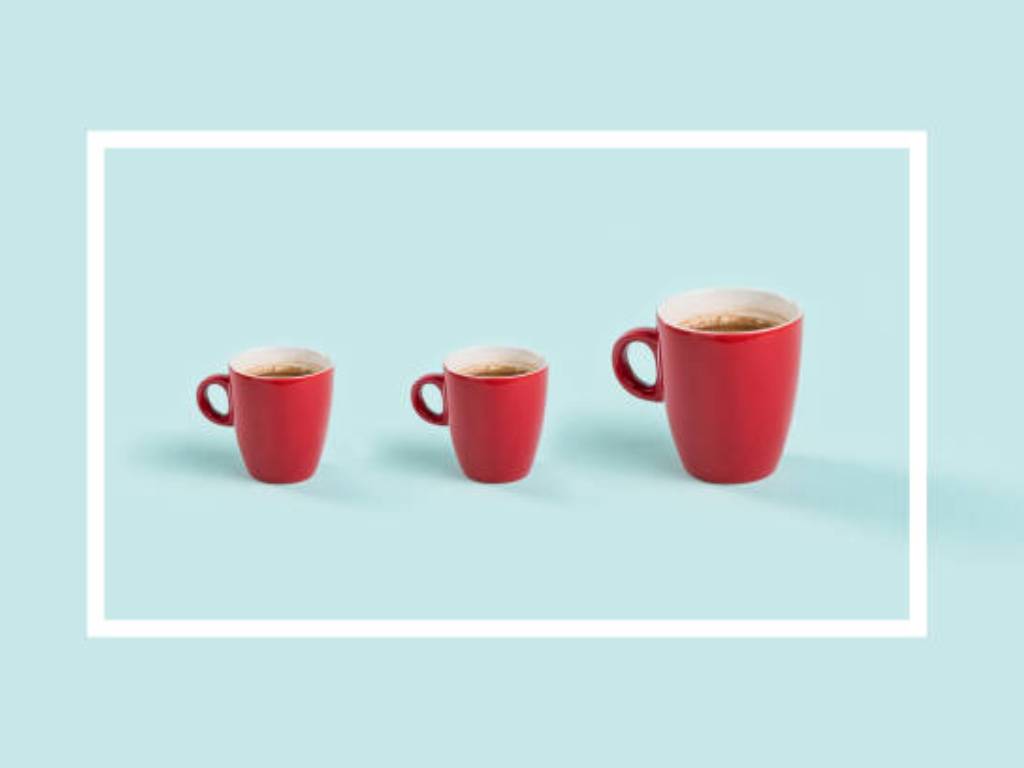
Italy:
- Takeaway: In Italy, the practice of takeaway coffee is not as popular as in other countries. On the other hand, when Italians are selecting takeaway, they will go for the smaller sizes of 4-6 fl oz (118.3-177.4 ml) to ensure that the espresso is not compromised.
- In-store: A typical Italian espresso cup ranges from 2-3 fl oz (59-89 ml) and is served in small, thick-walled demitasse cups. Cappuccinos and lattes are commonly served in slightly bigger cups, that is, 5-6 fl oz (147.9-177.4 ml).
Japan:
- Takeaway: In Japan, takeaway coffee cups are smaller than in the USA, with sizes ranging from 8-12 fl oz (236.6-354.9 ml). This follows the Japanese coffee cup size of around 6.5 fl oz (192 ml) which is the standard cup size.
- In-store: In Japanese coffee shops, the coffee is served in smaller cups and is around 6-8 fl oz (177.4-236.6 ml) for on-site consumption. On the other hand, some coffee shops in big cities have made bigger sizes to attract the younger generation and Western culture.
Australia and New Zealand:
- Takeaway: The takeaway coffee cups in Australia and New Zealand are similar to those in the U.S. but common sizes in the region are 8 fl oz (236.6 ml), 12 fl oz (354.9 ml), and 16 fl oz (473.2 ml).
- In-store: Australian and New Zealand shop standard cup size is about 8.8 fl oz (260 ml), and this is a bit larger than the traditional Italian espresso cup. This size is a favorite for drinks like flat whites and long blacks, which are the regulars in the local coffee culture.
Turkey:
- Takeaway: There is not such a takeaway coffee culture in Turkey as the traditional Turkish coffee experience is related to social gatherings and in-store consumption.
- In-store: Turkish coffee is served in tiny, exquisitely decorated cups called “fincan” which hold around 2-3 fl oz (59-89 ml) of the strong, thick coffee. The small size helps to produce a strong flavor and a quick coffee break experience which is often combined with a glass of water and a sweet treat.
Choosing the Right Cup Size for Your Coffee Shop
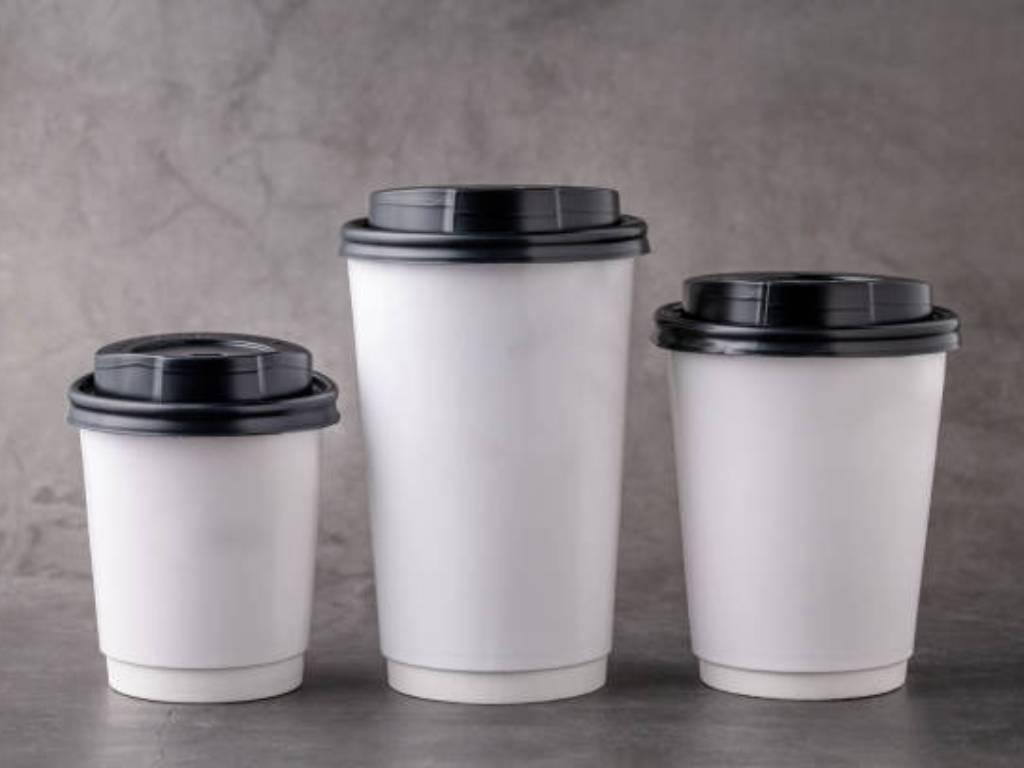
When picking the cup sizes for your coffee shop, there are a few things to think about:
First, you need to understand what your customers like. Are they the people who are always in a hurry and prefer the oversized ones? Should customers choose bigger cups or smaller, more traditional-sized ones?
Next, consider the science behind coffee cup shapes and materials. A wide-brimmed mug, for example, allows more of the coffee’s aroma to reach the nose, enhancing the sensory experience. A thick-walled ceramic cup, on the other hand, retains heat more effectively, keeping hot drinks hotter for longer. These subtle details can significantly impact how your customers perceive your coffee’s quality.
Next, consider what coffee drinks you will be providing. If you mainly make espresso drinks, like cappuccinos and lattes, then you may need different sizes. In this way, you can give people who like various amounts of milk and espresso.
In addition, consider what effect the cups sizes will have on the overall workflow and efficiency. Bigger cups could need more time to fill up and to be ready. The service of smaller cups can be sped up in your peak hours.
Finally, the size of the cup you select may also be an important part of your branding and the overall look of your coffee shop. Select sizes that are appropriate for your brand and your coffee drinks look great.
Ultimately, the best solution is to find a balance. You need to satisfy your customers, perform well and be brand consistent when choosing cup size. Yoonpak offers coffee cups disposable wholesale options, allowing you to maintain brand consistency with durable, customizable cups.
Coffee Cup Selection Checklist
To help you make a confident decision, use this checklist to evaluate your options:
- Customer Demographics & Habits:
- [ ] Do my customers primarily get coffee to go (takeaway)?
- [ ] Do they prefer large, American-style servings or smaller, traditional European sizes?
- [ ] Do a significant number of customers stay to enjoy their coffee in-store?
- Menu & Drink Types:
- [ ] Do I offer a wide range of hot drinks (e.g., espresso, latte, cappuccino)?
- [ ] Do I sell many cold or iced beverages?
- [ ] Do my specialty drinks require extra space for milk, foam, or toppings?
- Workflow & Operations:
- [ ] Can my staff efficiently prepare drinks with the chosen cup sizes?
- [ ] Will larger cups slow down service during peak hours?
- [ ] Do the cups stack easily to save storage space?
- Branding & Aesthetics:
- [ ] Do the cup sizes align with my brand’s image (e.g., modern, traditional, minimalist)?
- [ ] Are the cups suitable for custom printing of my logo or brand message?
- [ ] Do the cups and mugs visually enhance the drinks they contain?
- Cost & Sustainability:
- [ ] Are the cups budget-friendly, considering both initial cost and long-term usage?
- [ ] Are the materials eco-friendly or recyclable?
- [ ] Can I find a reliable supplier who can provide consistent quality and timely delivery?
Smart Sourcing: Finding the Right Supplier
Choosing the right cup is only half the battle; finding the right supplier is just as crucial for a coffee shop’s success. A smart sourcing strategy goes beyond just price. Here’s a checklist to guide you:
- Material Quality and Sustainability: Look for a supplier that offers high-quality, durable materials. If sustainability is a priority for your brand, ensure they provide eco-friendly options like recyclable paper or reusable materials.
- Customization Options: Can they print your logo or custom designs on the cups? This is a key way to reinforce your brand identity and create a memorable experience for your customers.
- Variety and Flexibility: A good supplier should be able to provide a range of cup sizes and types to match your full menu, from small espresso cups to large iced coffee tumblers.
- Reliability and Logistics: Can they provide a consistent and timely supply of cups, especially during peak seasons? A reliable partner will prevent you from running out of essential supplies.
- Customer Service: Choose a supplier with strong customer support. They should be responsive and ready to help with any issues, from design questions to delivery problems.
YOON: We are Your Recommended Supplier for Paper Coffee Cups
At YOON, we are well aware of how essential it is for you to have reliable high-end paper coffee cups for your coffee shop. Our paper cup factory is a reliable supplier among the coffee cup manufacturers, and we have a wide variety of cup sizes to meet your specific demands.
Our paper cups for coffee are made of materials that are good for the environment. They are also designed to keep your coffee hot and it taste like it should. We have 8 oz cups for your regular brews and bigger sizes for your specialty drinks.
Along with our many cup sizes and many types of coffee cups, YOON also have custom printing. This allows you to promote your brand and make your customers remember you. Our team of experts is dedicated to providing you with top-notch customer service. We will ensure that your coffee shop has a dependable source of high-end paper cups made to last with durable, quality materials at all times.
Conclusion
The coffee cup sizes might not appear to be a big deal, but they can have a great effect on the level of success of your coffee shop. Through knowledge of the standard sizes, cultural variances, and the right coffee-to-cup ratio, you will learn how to make smart choices on what cup sizes to offer.
While deciding on cup sizes, take into account your customers, what you offer on your menu, how fast you can work, and branding. And in case you are looking for a reliable coffee cup company for your paper coffee cups, YOON is there for you. We will help you make your coffee shop thrive from beginning to the end.


